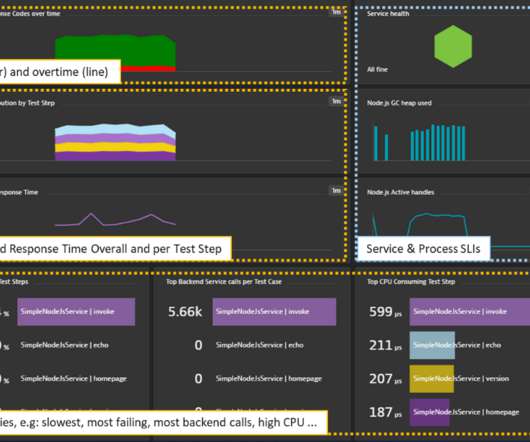Lessons learned from enterprise service-level objective management
Dynatrace
MAY 19, 2022
To ensure their global service levels, they fully embraced the best practices outlined in Google’s SRE handbook , called the “Four Golden Signals,” to standardize what they show on their SRE dashboards. These four dimensions apply to any layer in the technical stack, such as front-end, databases, and external services.












Let's personalize your content